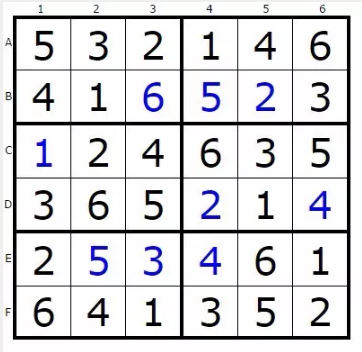双语阅读
In this optical microcavity, created bythe lab of Nick Vamivakas, confined light interacts with an atomically thinsemiconductor to create particles with negative mass. The device also presents“a way to generate laser light with an incrementally small amount of power,”says Vamivakas, an associate professor of quantum optics and quantum physics atRochester’s Institute of Optics.
在Nick Vamivakas实验室中创建的光学微腔里,受控光线与原子级的薄半导体相互作用,产生具有负质量的粒子。罗彻斯特光学研究所量子光学与量子物理学副教授瓦米瓦卡斯(Vamivakas)说,该装置还呈现出了“一种产生了逐渐产生小功率的激光的方法”。
Most objects react in predictable wayswhen force is applied to them—unless they have "negative mass." Andthen they react exactly opposite from what you would expect.
大多数物体有力作用时可预测运动,除非它们具有“负质量”,这样它们的运动会和人们所期望的完全相反。
Now University of Rochester researchershave succeeded in creating particles with negative mass in an atomically thin semiconductor, by causing itto interact with confined light in an optical microcavity.
现在,罗切斯特大学的研究人员已经成功地通过在光学微腔中与受限光线相互作用,在原子级的薄半导体中产生了具有负质量的粒子。
This alone is "interesting andexciting from a physics perspective," says Nick Vamivakas, an associateprofessor of quantum optics and quantum physics at Rochester's Institute ofOptics. "But it also turns out the device we've created presents a way togenerate laser light with an incrementally small amount of power."
罗切斯特光学研究所量子光学与量子物理学副教授尼克·瓦米瓦克斯(Nick Vamivakas)说,仅“从物理学的角度来看是有趣而刺激的”,“但是,同时我们发现这种设备提供了一种产生少量功率激光的方法。”
The device, described in Nature Physics,consists of two mirrors that create an optical microcavity, which confineslight at different colors of the spectrum depending on how the mirrors arespaced.
在Nature Physics期刊中描述的这种装置由两个镜子组成,这两个镜子构成一个光学微腔,随着镜子的间隔方式不同,受控光线在不同的光谱颜色变化。
Researchers in Vamivakas' lab, includingco-lead authors Sajal Dhara (now with the Indian Institute of Technology) andPh.D. student Chitraleema Chakraborty, embedded an atomically thin molybdenumdiselenide semiconductor in the microcavity.
Vamivakas实验室的研究人员,包括这篇文章的共同主要作者Sajal Dhara(现在在印度理工学院)和博士Chitraleema Chakraborty,他们在微腔中嵌入了一个原子级的薄的二硒化钼半导体。
The semiconductor was placed in such a waythat its interaction with the confined light resulted in small particles fromthe semiconductor—called excitons—combining with photons fromthe confined light to form polaritons.
半导体的放置方式使得它与受限光线的相互作用导致来自半导体的小粒子(称为激子)与来自受限光的光子结合以形成极化子。
"By causing an exciton to give upsome of its identity to a photon to create a polariton, we end up with an object that has anegative mass associated with it," Vamivakas explains. "That's kindof a mind-bending thing to think about, because if you try to push or pull it,it will go in the opposite direction from what your intuition would tellyou."
Vamivakas解释说:“通过使激子放弃光子的一些特性来创建极化激元,我们最终会得到一个具有负质量的物体。” “这是一个令人费解的想法,因为如果你试图推或拉他,将得到与你的直觉方向的方向。”
Other research groups have beenexperimenting with similar devices, Vamivakas says, but this is the firstdevice to produce particles with negative mass.
其他研究小组一直在试验类似的设备,Vamivakas说,但这是第一个生产负质量颗粒粒子的设备。
Though applications are "still downthe road," Vamivakas adds, his lab will continue to explore:
· How the device might serve as a substrate for producinglasers. "With the polaritons we've created with this device, theprescription for getting a laser to operate is completely different," Vamivakassays. "The system starts lasing at a much lower energy input" thantraditional lasers now in use.
Vamivakas补充说,虽然应用程序“还在路上”,但他的实验室将继续探索:
该器件如何作为生产激光器的衬底。 Vamivakas说:“利用我们用这种设备创建的极化激光,获得激光的操作方式会完全不同。该体系启动所需激射能量比现在使用的传统激光器低得多”。
· The physical implications of creating negative mass inthe device. "We're dreaming up ways to apply pushes and pulls—maybe byapplying an electrical field across the device—and then studying how thesepolaritons move around in the device under application of external force."
在设备中产生负质量的物理影响。 “我们正在想方设法推挤和拉 - 也许通过在设备上施加电场能解决,后面我们将研究这些极化子在施加外力的情况下如何在设备中移动。
科技词汇
Negative mass 负质量
Microcavity 微腔
Optical 光学的
Confined 受限的
Semiconductor 半导体
Laser 激光
Incrementally 逐渐的
Quantum 量子
Perspective 角度,观点
Mirror 镜子
Spectrum 光谱
Embedded 嵌入
Molybdenum 钼
Polariton 极化子;偏振子
Exciton 例外,反对
互动问答
本期:迷你数独
每个谜题都由一个在不同位置给与提示数字的4x4或6x6网格组成。游戏的目的是将空方格填上数字1到4(对于4x4大小的谜题)或者1到6(对于6x6的谜题),使得每一行,每一列以及每一个宫都没有重复的数字出现。

本期难度:Moderate
(答案见下期)

上期互动答案
上期文章:量子“远距离幽灵行动”逐步实现
注:数独是一种源自 18 世纪末的瑞士数学家欧拉所创造的拉丁方块游戏。传数独源起于拉丁方阵( Latin Square ), 1970 年代在美国发展,改名为数字拼图( Number Place )、之后流传至日本并发扬光大,以数学智力游戏智力拼图游戏发表。在 1984 年一本游戏杂志《パズル通信ニコリ》正式把它命名为数独,意思是“在每一格只有一个数字”。后来一位前任香港高等法院的新西兰籍法官高乐德( Wayne Gould )在 1997 年 3 月到日本东京旅游时,无意中发现了。他首先在英国的《泰晤士报》上发表,不久其他报纸也发表,很快便风靡全英国,之后他用了 6 年时间编写了电脑程式,并将它放在网站上,使这个游戏很快在全世界流行